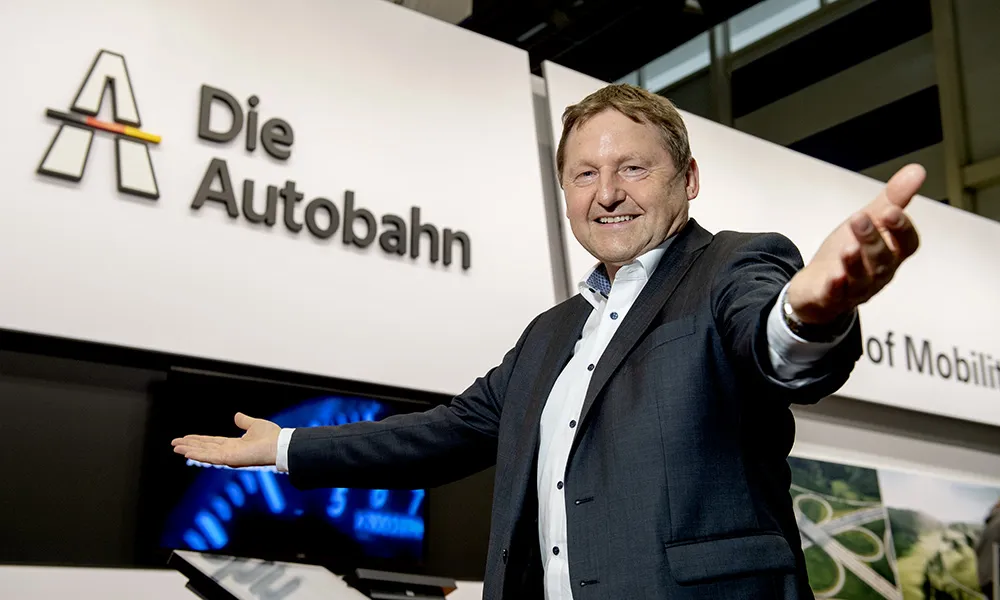There is a lot more that appears from this sector that is ITS on an international scale, once the surface is scratched. Over the past two months we’ve uncovered a surprising amount of technological progression hitherto unannounced to the transportation industry worldwide. For example, at the beginning of November we were at the Vision exhibition in Stuttgart. This magazine has followed developments from the machine vision sector for some time as advanced digital cameras and automated processing systems bega
December 7, 2012
Read time: 4 mins

There is a lot more that appears from this sector that is ITS on an international scale, once the surface is scratched. Over the past two months we’ve uncovered a surprising amount of technological progression hitherto unannounced to the transportation industry worldwide.
For example, at the beginning of November we were at the Vision exhibition in Stuttgart. This magazine has followed developments from the machine vision sector for some time as advanced digital cameras and automated processing systems began to be applied to transportation, with suppliers marketing to enforcement and incident detection areas of ITS.
Nonetheless, it has still been surprising to find the extent of developments in machine vision targeted at transportation in general and ITS in particular.
Our special six page feature on the latest evolutions from machine vision suppliers starts on page 48 in the November December Issue.
Principal discussions at the6963 Vision Show, for transportation at least, included debate on the merits of different types of sensor technology. Suppliers in the main are offering all options and bespoke products and systems, notably in recognition of their transportation and ITS clients’ know-how with regard to what machine vision can do. “They (system integrators) already have a lot of knowledge of what’s needed in terms of functionalities. They want innovation,” says one leading supplier.
The overall response on show in Stuttgart and reported in this issue of ITS International has impressed remarkably. Specific applications of multi-lane traffic monitoring and enforcement stand to benefit at very least. Taken at its most, personally I had previously not realised how far application of machine vision technology extends. “Powerful” uses predicted in traffic monitoring and control may be followed by use of sophisticated camera and software systems as part of advanced driver assistance systems (ADAS). Whatever the likelihood of ADAS reaching showrooms to the extent necessary for vehicles to be regarded as ‘autonomous’, a researcher at1731 BMW once told this magazine that such systems were being developed to their maximum potential – however likely the deployment – to maximise the expertise behind what can be deployed.
Those good folk at BMW have been talking to us again, this time about their research efforts in context of ‘V2X’ vehicle to vehicle and vehicle to infrastructure communication. Not just BMW have given some revealing insights over past weeks; the2069 Daimler brand is also heavily involved in European V2X research and development – among a group of 12 leading vehicle manufacturers in the Car2Car Communications Consortium.
October’s6456 ITS World Congress in Vienna was dominated by V2X exhibits, demonstrations and associated developments in ITS technology. On the surface, the 12 manufacturers of the Car2Car Consortium were announcing a memorandum of understanding with a 2015 target date for deployment of V2X – for the car-to-car or V2V part anyway. Underneath, there is a myriad of different research projects and sites working on V2I developments and an abundance of technical matters to clear and stakeholders to consult. BMW makes a point of its involvement in the German simTD research project and the importance of rolling out V2X for vehicles and infrastructure. The latter has more of a political and institutional nature lurking beneath the surface to hold it back, however. If BMW and partners want V2V and V2I to roll out simultaneously, 2015 is likely to be too ambitious.
Finally, a word on road charging and tolling. Gothenburg’s congestion charge cordon will be enforced from January 2013, the latest link between road pricing and transportation policy in Scandinavia and beyond. There is a lot more to this than initially comes to mind as well.
Jon Masters
For example, at the beginning of November we were at the Vision exhibition in Stuttgart. This magazine has followed developments from the machine vision sector for some time as advanced digital cameras and automated processing systems began to be applied to transportation, with suppliers marketing to enforcement and incident detection areas of ITS.
Nonetheless, it has still been surprising to find the extent of developments in machine vision targeted at transportation in general and ITS in particular.
Our special six page feature on the latest evolutions from machine vision suppliers starts on page 48 in the November December Issue.
Principal discussions at the
The overall response on show in Stuttgart and reported in this issue of ITS International has impressed remarkably. Specific applications of multi-lane traffic monitoring and enforcement stand to benefit at very least. Taken at its most, personally I had previously not realised how far application of machine vision technology extends. “Powerful” uses predicted in traffic monitoring and control may be followed by use of sophisticated camera and software systems as part of advanced driver assistance systems (ADAS). Whatever the likelihood of ADAS reaching showrooms to the extent necessary for vehicles to be regarded as ‘autonomous’, a researcher at
Those good folk at BMW have been talking to us again, this time about their research efforts in context of ‘V2X’ vehicle to vehicle and vehicle to infrastructure communication. Not just BMW have given some revealing insights over past weeks; the
October’s
Finally, a word on road charging and tolling. Gothenburg’s congestion charge cordon will be enforced from January 2013, the latest link between road pricing and transportation policy in Scandinavia and beyond. There is a lot more to this than initially comes to mind as well.
Jon Masters








